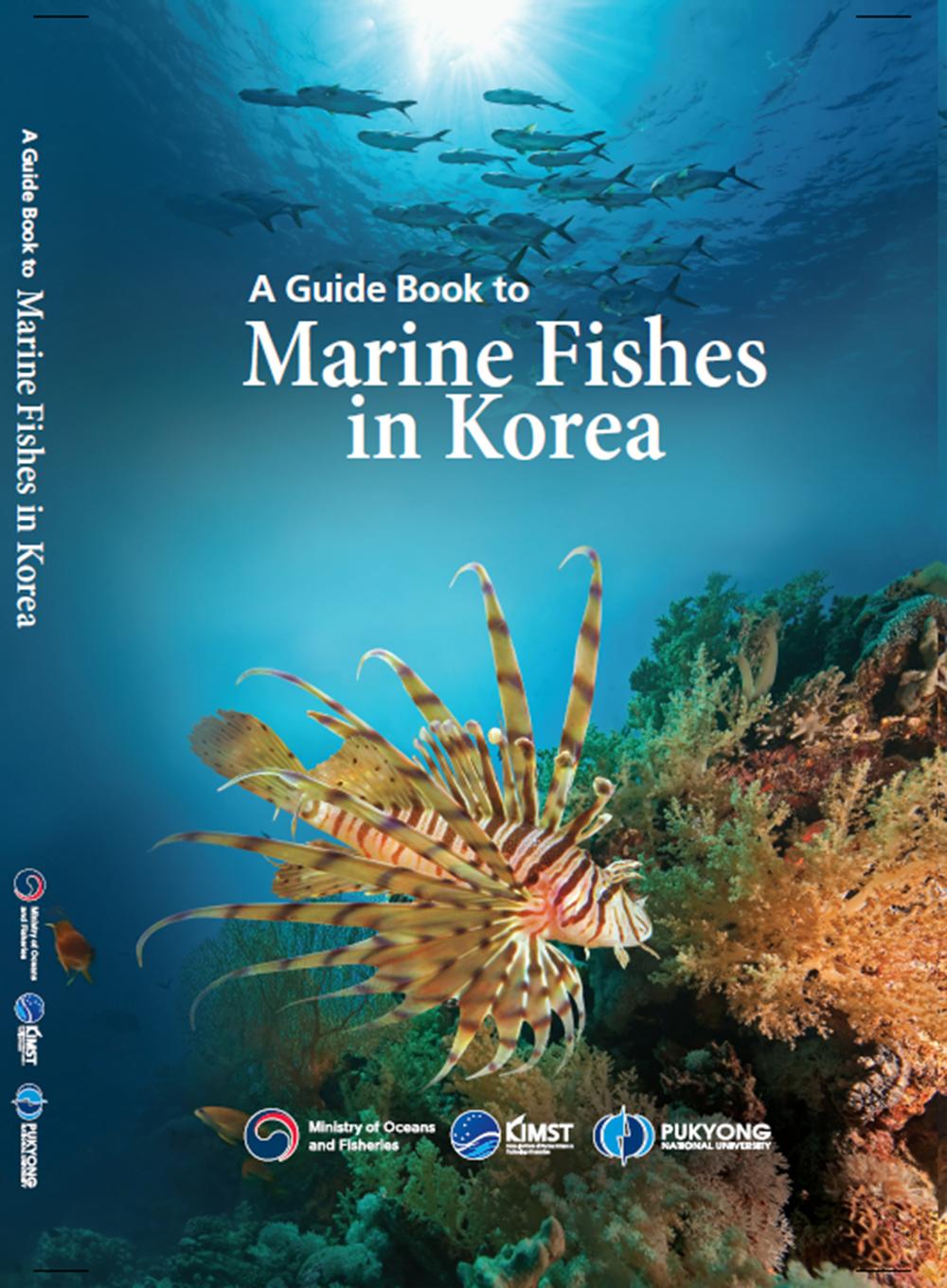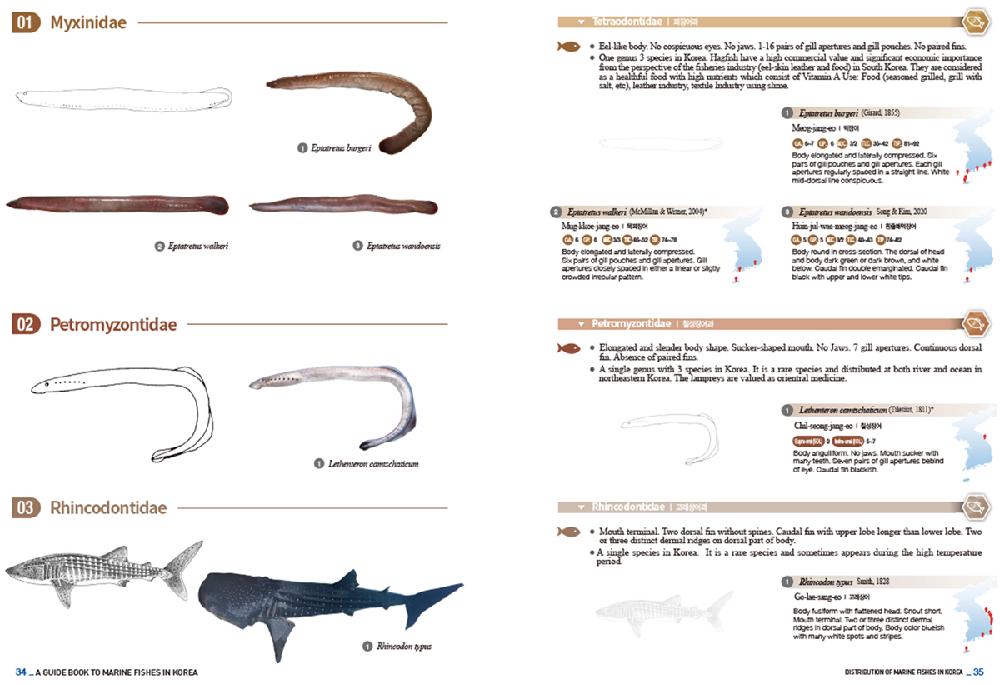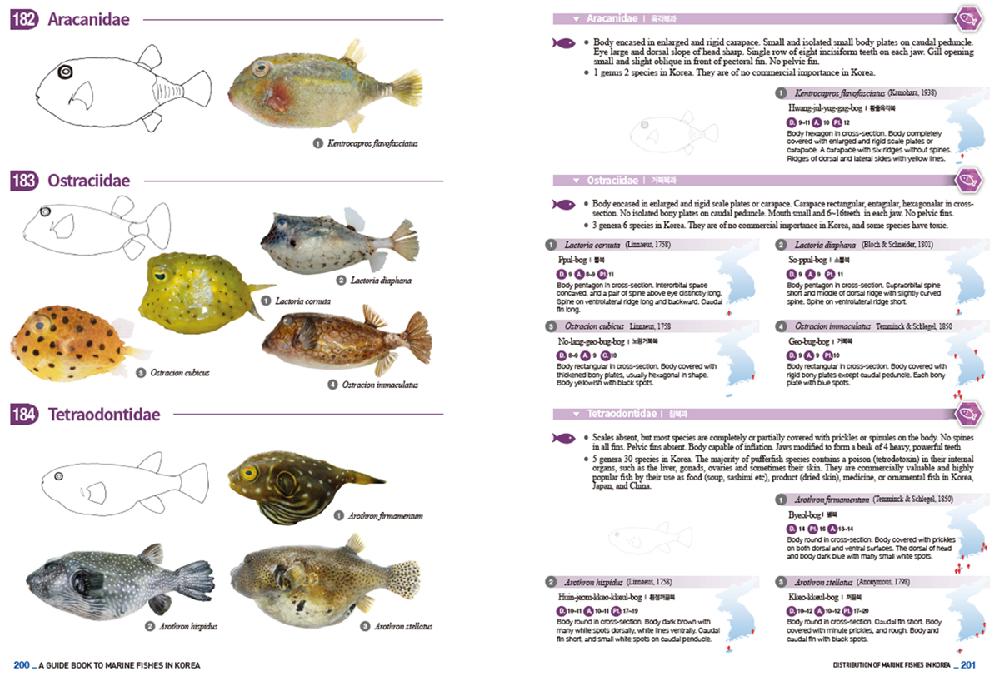커뮤니티
부경투데이
- 국립 부경대학교의 다양한 모습과 소식을 접하시면 부경대학교가 한번 더 가까워집니다.
| 한국 해양어류 세계에 알린다(PKNU introduces Korean marine fishes to the world.) | |||
| 작성자 | 대외협력과 | 작성일 | 2020-12-16 |
| 조회수 | 394 | ||
| 첨부파일 | |||
| 한국 해양어류 세계에 알린다(PKNU introduces Korean marine fishes to the world.) | |||||
 |
대외협력과 |  |
2020-12-16 |  |
394 |

|
부경대 해양어류자원 기탁등록보존기관(기관장 김진구·자원생물학과 교수)이 최근 발간한 『A Guide Book to Marine Fishes in Korea』가 그것이다. 이 책은 부경대 김진구 교수 연구팀이 지난 1999년부터 올해까지 22년간 우리나라 전 해역에서 직접 채집한 해양어류 752종의 분포정보를 집대성한 해양어류 안내서다. 일부 희귀종이나 대형종은 국립수산과학원과 한국수산자원공단의 협조를 받아 수집했다. 지난해 말 이 기관이 발간한 『한반도의 바닷물고기』를 영문으로 번역한 것으로, 당시 책에 수록된 742종에 올해 채집 및 수집된 10종을 추가했다. 우리나라 해양어류 752종의 사진, 학명, 형태특징, 분포지도를 실어 어류의 정보를 한눈에 볼 수 있다는 점이 특징이다. 같은 과(family)에 소속된 어류는 한 페이지에 모아 유사한 종을 쉽게 구분되도록 배치했다. 특히 이 책에 실린 한국 고유종인 흰줄왜먹장어, 황줄뺨여을멸, 상주물뱀, 해마, 긴꼬리엄지도치, 줄가시치, 민그물베도라치 등 7종은 남해안에서 처음 보고돼 학계의 주목을 받은 종들이다. 신종 후보종인 알숭어, 까나리속, 빨갱이속, 밤쥐치복속, 황해흰점복 등 국내외 어류학자들이 많은 관심을 보이는 연구 대상종들도 수록됐다. 김진구 교수는 “이 책을 통해 19세기 초 조선시대에 발간된 <자산어보>를 비롯해 20세기 말 한국의 어류 연구사와 동해와 서해, 남해의 해양환경 특성, 해역별 대표 어종을 소개하는 것은 물론, 독도의 지형과 서식 어류도 상세히 소개하기 위해 노력했다.”라고 말했다. 그는 “지금까지 우리나라 전역에 서식하는 해양어류의 분포정보를 해외에 알릴 기회가 거의 없었다. 이 책이 동북아 해양어류 연구에서 교두보 역할을 하는 것은 물론, 1993년과 2014년 각각 발효된 ‘생물다양성협약’과 ‘나고야의정서’에 대비한 어류정보집으로 향후 우리나라 해양어류를 소재로 한 건강보조식품, 의약품 개발 등 고부가가치 창출에 많은 도움이 될 것으로 기대한다.”라고 밝혔다. 한편 부경대 해양어류자원 기탁등록보존기관은 2014년부터 해양수산부의 ‘해양생명공학기술개발사업’의 일환으로 한국해양과학기술진흥원의 협조를 받아 연구를 진행해 이 책을 제작했으며 해외 자연사박물관, 대학, 연구기관 등에 이 책을 배포할 계획이다. <부경투데이> Pukyong National University draws public attention by publishing 『A Guide Book to Marine Fishes in Korea』 an English book that complies information on 752 species of fish to share information on marine fishes in Korea with the world. This is the recently published 『A Guide Book to Marine Fishes in Korea』 by Marine fish resources deposit registration and preservation organization (Head Kim Jin-koo, Department of Marine biology) at Pukyong National University. This book is a guidebook of marine fishes compiled by the research team of Professor Kim Jin-koo of Pukyong National University, which has integrated the guide information of 752 species of marine fish directly collected from all seas in Korea for 22 years up to this year since 1999. Some rare or large species were collected in cooperation with the National Institute of Fisheries Science (NIFS) and Korea Fisheries Resources Agency (FIRA). This is an English translation version of 『A Guide Book to Marine Fishes in Korea』 published by this organization at the end of last year, adding 10 species collected this year to the 742 species contained in the book at the time. It features photos of 752 marine fish species in Korea, scientific names, shapes and characteristics, and the fact that information on fish can be viewed at once through the distribution map. Fish belonging to the same family are grouped and placed on a page so that similar species can be easily identified. Especially, seven species, such as Korean native species in this book, such as the white-tailed Japanese hagfish, Albula koreana, Pisodonophis sangjuensis, Sea horse, long tailed lump sucker, Eulophias koreanus, Dictyosoma burgeri, were first reported in the south coast and received attention from academia. New candidate species, such as Mugil japonicus, Ammodytes, Triggerfish, Takifugu alboplumbeus are also included. Professor Kim Jin-koo said, "Through this book, we introduce the Korean fish researcher in the late 20th century, the classification system of marine life of the East Sea, the West Sea, and the South Sea, as well as the geographical features of Dokdo, including the <Jasan Eobo>(玆山魚譜: a Korean Atlas of Fish) published in the early 19th century during the Joseon Dynasty. We also tried to introduce in detail and inhabited fish." "Up to date, there has been less opportunity to report overseas about the distribution information of marine fishes living throughout Korea. Not only does this book serve as a bridgehead for research on marine fish in Northeast Asia, but it is also regarded as a collection of fish information in preparation for the ’Convention on Biological Diversity, CBD’ and ’the Nagoya Protocol’, which came into force in 1993 and 2014. In the future, it is expected to be of great help in creating high added value, such as the development of health supplements and medicines made from marine fish in Korea, " he explained. Pukyong National University’s Marine fish resources deposit registration and preservation organization has conducted research and produced this book in cooperation with the Korea Institute of Marine Science & Technology Promotion (KIMST) as part of the ’Project for Marine Biotechnology Development’ of the Ministry of Oceans and Fisheries since 2014. The institution plans to distribute this book to overseas natural history museums, universities, and research institutes. <Pukyong Today> |
 _A guid book to marine fishes in Korea_ 표지.jpg
_A guid book to marine fishes in Korea_ 표지.jpg
 부경대학교가 우리나라 해양어류 정보를 세계와 공유하기 위해 752종에 달하는 물고기의 정보를 한데 모은 영문 서적 『한국의 해양어류 분포도』를 발간해 눈길을 끈다.
부경대학교가 우리나라 해양어류 정보를 세계와 공유하기 위해 752종에 달하는 물고기의 정보를 한데 모은 영문 서적 『한국의 해양어류 분포도』를 발간해 눈길을 끈다.
